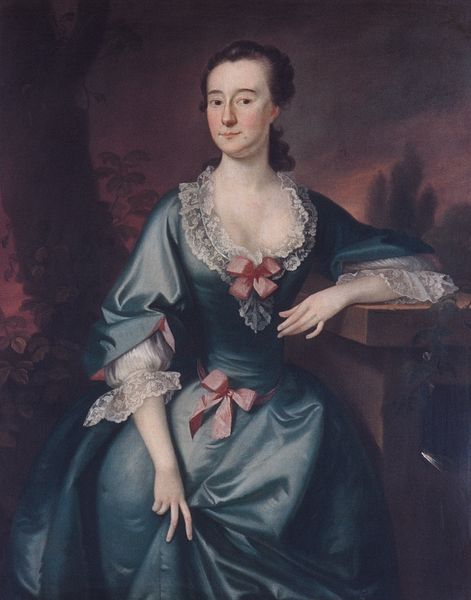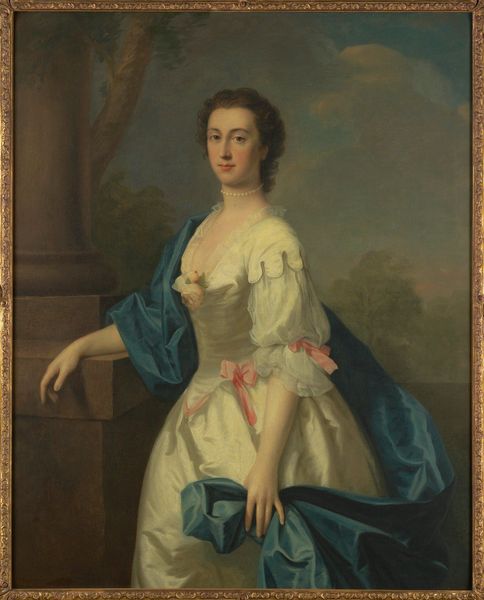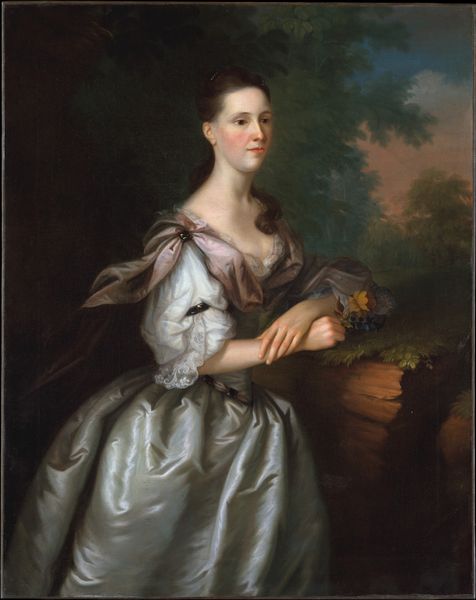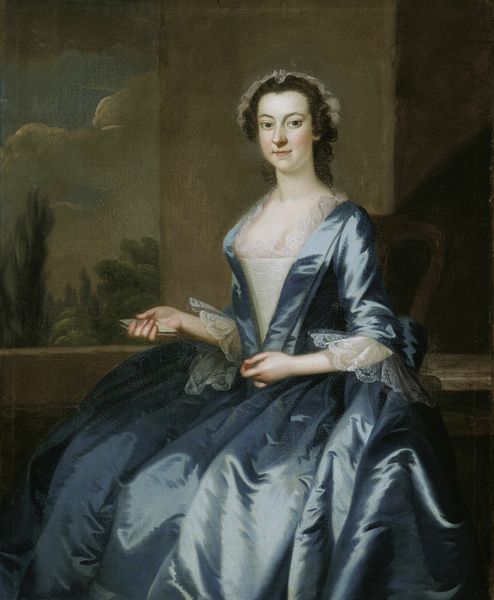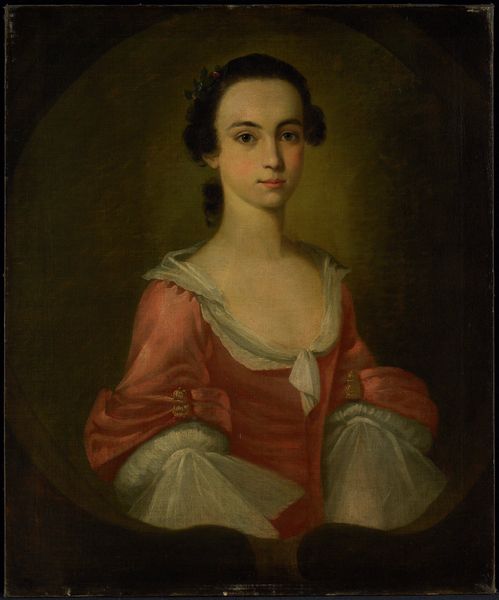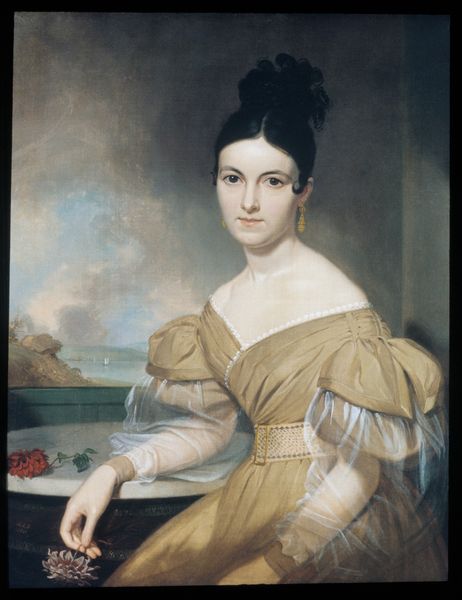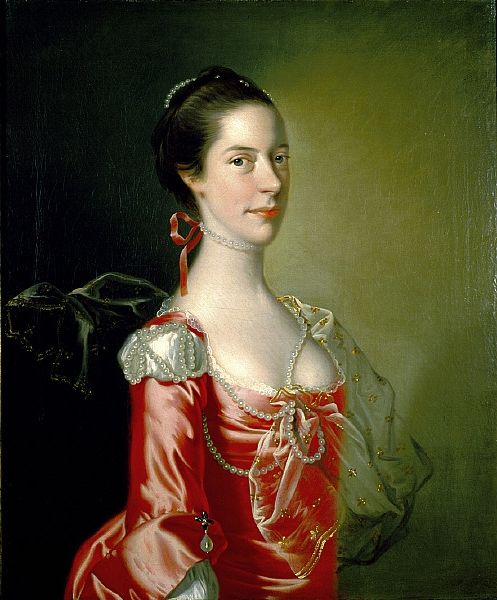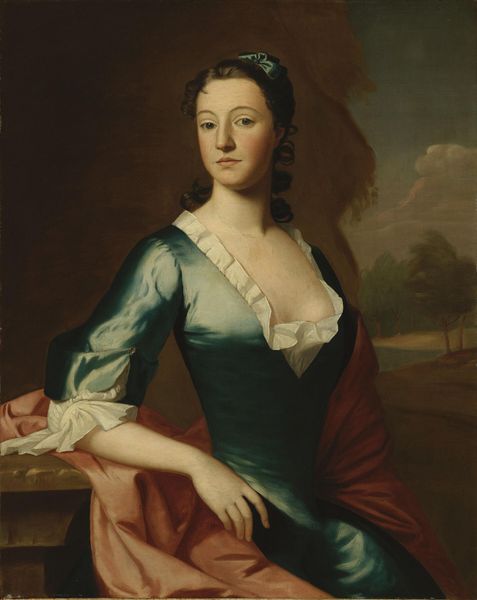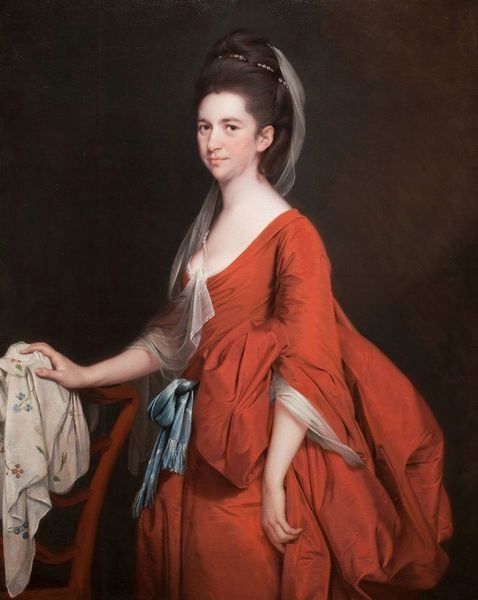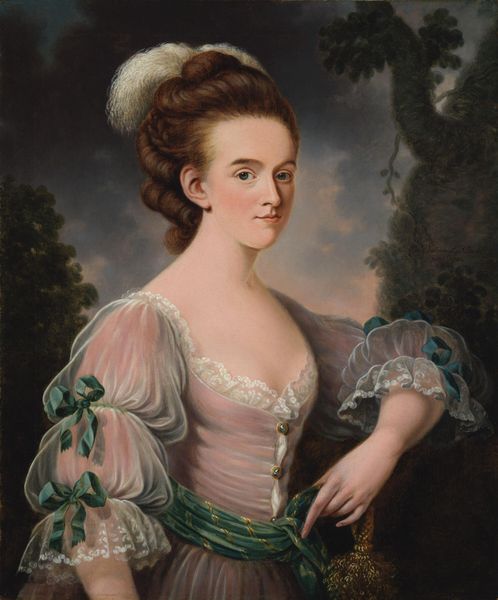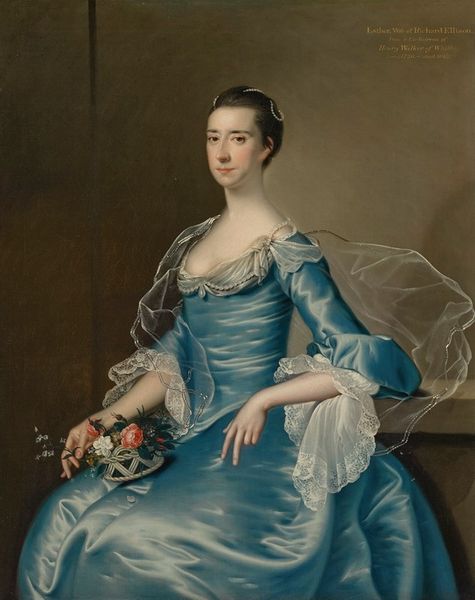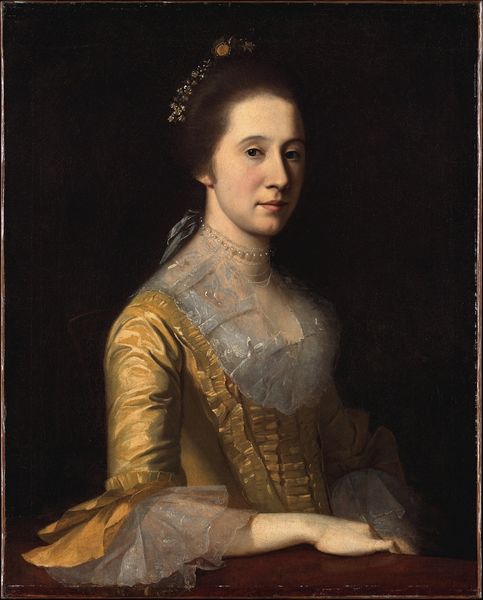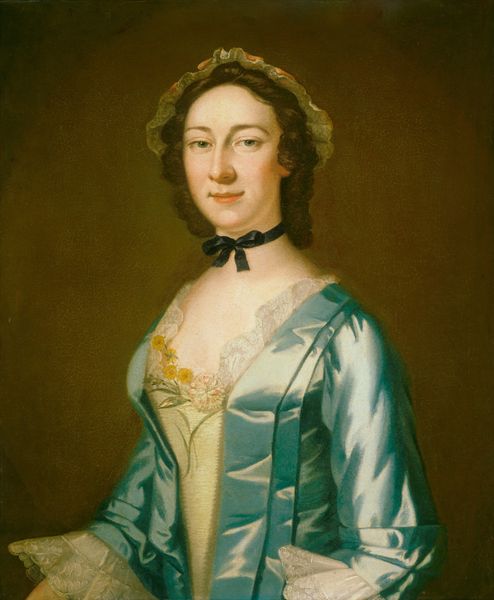
painting, oil-paint
#
portrait
#
baroque
#
painting
#
oil-paint
#
figuration
Dimensions: 127.6 × 101.5 cm (50 × 40 in.)
Copyright: Public Domain
Editor: This is Joseph Blackburn's 1754 oil on canvas portrait, "Abigail Chesebrough (Mrs. Alexander Grant)," housed here at the Art Institute of Chicago. I'm struck by the formality of the sitter; she’s so carefully posed. How do you read the social dynamics in play here? Curator: That formality speaks volumes, doesn't it? Consider the context: Colonial America, where displays of wealth and social standing were meticulously constructed. Blackburn, trained in Europe, brings a Baroque sensibility, but adapted to the American desire for upward mobility and establishing lineage. This portrait serves as a declaration of the Grant family’s arrival, their place within a growing merchant class seeking legitimacy. Notice the dress. Editor: The fabric looks so expensive! The silk… almost luminous. And she’s holding a fan, too. Are those status symbols? Curator: Precisely! The silk is imported, evidencing trade connections and affluence. The fan, likely ivory, is not just functional but a fashionable accessory, used to communicate silently through codified gestures – flirtation, secrecy, boredom, you name it. It gives the sitter agency within a very strict societal framework. Editor: So, beyond just being a pretty picture, it’s doing work to signal something important about this family’s place in the world? Curator: Absolutely. This is image-making as social climbing, using the visual language of European aristocracy to define themselves in the New World. Consider where this portrait would be displayed – likely a prominent place in their home, continually reinforcing their aspirations and solidifying their social role in the community. Editor: I hadn't considered the setting outside of the painting itself. I’m definitely seeing this piece in a new light now, understanding how it functions within a broader societal and historical context. Curator: That’s the beauty of looking at art through the lens of social history; we move beyond aesthetics to decipher the complex stories art can tell us about power, class, and the ever-evolving dynamics of society.
Comments
No comments
Be the first to comment and join the conversation on the ultimate creative platform.
